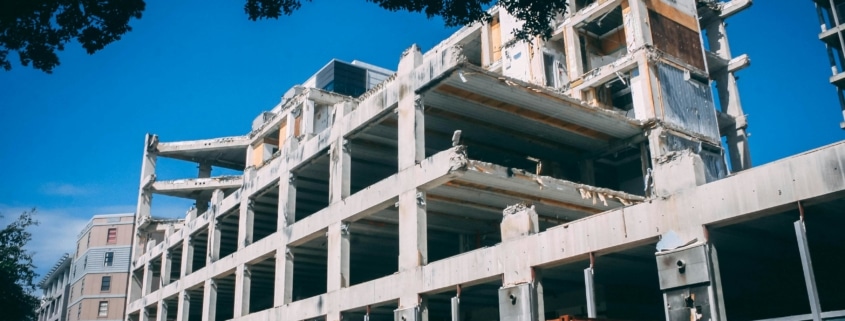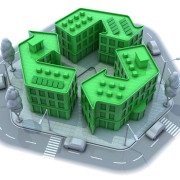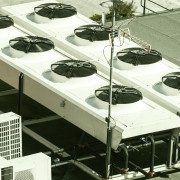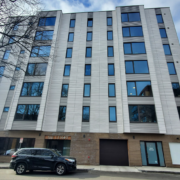How §179D Deduction is Driving Sustainable Growth & Development
In a world grappling with climate change, sustainable development has become vital to our collective future. At the intersection of environmental responsibility and economic incentive, §179D Deduction of the Internal Revenue Code is emerging as a potent catalyst for sustainable commercial building growth. At Walker Reid, we are committed to helping businesses navigate the intricacies of tax regulations and capitalize on opportunities like §179D Tax Deduction.
Guiding Principles: The Objectives of §179D Deduction
179D transcends the realm of a mere tax benefit; it represents a strategic initiative designed to foster sustainable practices within the commercial building industry. Several key objectives drive this program:
- Reduced Energy Consumption: Commercial buildings are significant contributors to global energy use. §179D deduction incentivizes building owners to adopt energy-efficient technologies and operational practices, substantially decreasing overall energy consumption.
- Stimulating Innovation: As the demand for energy-efficient solutions rises, §179D acts as a catalyst for innovation in building materials, HVAC systems, and related technologies. This fosters a more sustainable building industry for the future.
- Promoting Corporate Cost Savings: Businesses operating in energy-efficient buildings benefit from lower utility bills, culminating in significant cost savings over time. This translates to increased profitability and a more competitive edge.
- 179D creates a synergistic relationship that benefits businesses, the environment, and the overall economy by addressing these objectives.
Incentivizing Investment: Financial Rewards for Energy Efficiency
The cornerstone of §179D deduction lies in its substantial tax deduction for qualified energy-efficient upgrades in commercial buildings. Previously capped at $1.80 per square foot, the deduction amount has been significantly increased under the Inflation Reduction Act of 2022 to $5.65 per square foot. This provides a strong financial incentive for building owners to consider energy-efficient building improvements that may have previously seemed cost-prohibitive.
To qualify for the full deduction, a commercial building must significantly reduce energy consumption compared to a theoretical baseline established by ASHRAE 90.1-2007 standards. However, the program recognizes that even smaller improvements contribute to sustainability. Therefore, partial deductions are available for projects that demonstrate a minimum improvement in specific areas, such as:
- 15% savings for HVAC systems
- 25% savings for lighting systems
- 10% savings for building envelope systems
The above estimates are applicable for energy modeling before 01/01/2023. Beyond this, the qualifying threshold will be 25% to 50%+ energy cost savings.
This tiered system encourages even modest energy-saving efforts, making §179D deduction accessible to a broader range of building owners and fostering a more inclusive approach to sustainable development.
The Inflation Reduction Act’s Impact
The Inflation Reduction Act 2022 has significantly revamped the deduction, further solidifying the government’s commitment to energy-efficient buildings. Key updates include:
- Increased Deduction Limits: As mentioned earlier, the base deduction amount has been raised to $5.65 per square foot, with further adjustments for inflation. This translates to a larger financial incentive for qualifying projects.
- Tax-Exempt Eligibility: Previously, §179D deductions were only for the designers of government buildings and unavailable for designers of non-profit organizations. The Inflation Reduction Act has rectified this, allowing designers of nonprofits like charity and church organizations to claim deductions for energy-efficient upgrades. This broadens the program’s reach.
- Prevailing Wage and Apprenticeship Requirements: Some projects may need to comply with prevailing wage and apprenticeship standards to qualify for the full deduction. However, exemptions are available for projects initiated before January 30, 2023. This provision strives to ensure fair labor practices while promoting energy-efficient development.
Economic Benefits for Businesses
The economic implications of §179D deduction are profound. The deduction makes sustainable building practices more accessible to a broader range of businesses. This green technology stimulates job creation in the green sector and promotes innovation in sustainable building materials and technologies. Moreover, businesses benefit from reduced operational costs and an enhanced public image, which can translate into higher property values and occupancy rates.
Real-world Examples of Successful Implementation
Across the nation, the impact of §179D is palpable. For instance, a large manufacturing facility in Ohio capitalized on this provision to upgrade its lighting and HVAC systems, resulting in annual energy savings of over 35% and a significant reduction in its carbon footprint. In another case, a public school district in California retrofit its buildings with energy-efficient windows and insulation, dramatically reducing its energy bills and freeing up funds for educational programs.
179D’s Role in Sustainable Growth
179D deduction stands as a testament to the power of policy in steering economic and environmental outcomes. By providing tangible incentives for energy efficiency, this legislation not only fosters sustainable development within the commercial real estate sector but also sets a precedent for integrating environmental responsibility into the fabric of our economy. As businesses and communities continue to reap the benefits of this provision, §179D is undeniably paving the way for a more sustainable, resilient future.
179D tax deduction isn’t just a tax provision – it’s a catalyst for change. At Walker Reid, we’re committed to empowering businesses to embrace sustainability and reap the rewards. With its unwavering dedication to energy efficiency and recent updates from the Inflation Reduction Act, §179D stands as a beacon of hope, leading the charge toward a brighter, more sustainable future.










